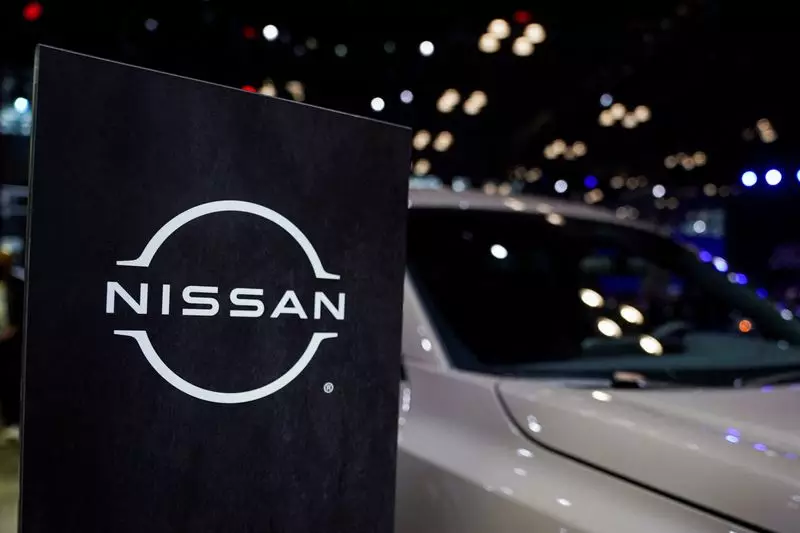Nissan Motor Co. is facing significant turbulence, as evidenced by a staggering 10% plummet in its stock prices during recent trading sessions. This sharp decline comes in the wake of the company’s announcement regarding substantial workforce reductions—amounting to 9,000 jobs—and a drastic 20% cut in manufacturing capacity. Such measures are not merely reactions to market fluctuations; they signify deeper systemic issues within the company that are exacerbated by rapidly changing consumer demands and fierce competition, especially from rising domestic manufacturers in China.
In the broader context of financial performance, Nissan’s announcement to revise its full-year operating profit outlook downwards by an alarming 70% is a glaring red flag. The automaker’s decision to eliminate its net forecast can be interpreted as an admission of the severe challenges it faces, particularly in the wake of necessary restructurings intended to streamline operations. The anticipated cost reductions of approximately 400 billion yen (around $2.61 billion) highlight the scale of the crisis that Nissan is attempting to navigate as it grapples with plummeting sales figures in key markets like the United States and China.
The crux of Nissan’s troubles in these vital markets resides heavily in its inadequate response to consumer trends. In China, where companies such as BYD are exponentially gaining market share with their affordable electric vehicles (EVs) and advanced hybrids, Nissan appears to be lagging significantly. Meanwhile, in the U.S., there is considerable demand for hybrid vehicles, an area where Nissan has notably underperformed. The company’s leadership, including CEO Makoto Uchida, has acknowledged a failure to predict the domestic U.S. market’s strong pivot towards hybrids, revealing a critical disconnect between market dynamics and Nissan’s product strategies.
Nissan’s restructuring efforts underscore a persistent struggle within the company, rooted in the aftermath of the dramatic ousting of former Chairman Carlos Ghosn in 2018. Subsequent shifts in the partnership with Renault have further complicated Nissan’s recovery efforts. Analyst Seiji Sugiura has pointed fingers at management strategies that seemingly ignore significant consumer trends in favor of new traditional gasoline models and EVs. With Nissan’s mid-term plan, introduced earlier this year, promising ambitious targets that now seem unattainable, the credibility of its leadership is called into question.
Amidst these challenges, government intervention remains uncertain. Japan’s Minister of Economy, Trade and Industry, Yoji Muto, has refrained from providing insights into potential governmental support for Nissan, leaving many analysts speculating about the automaker’s next steps. As the company endeavors to roll out 30 new models over three years while simultaneously trying to boost global sales, it faces an uphill battle that calls for not only strategic realignment but also a revitalization of market trust.
Nissan’s current predicament represents a formidable challenge—not just for the company but for global automakers as they navigate a rapidly transforming automotive landscape. The road ahead will undoubtedly require agile strategies, innovative thinking, and a keen understanding of consumer desires in order to reclaim market relevance and stability.

